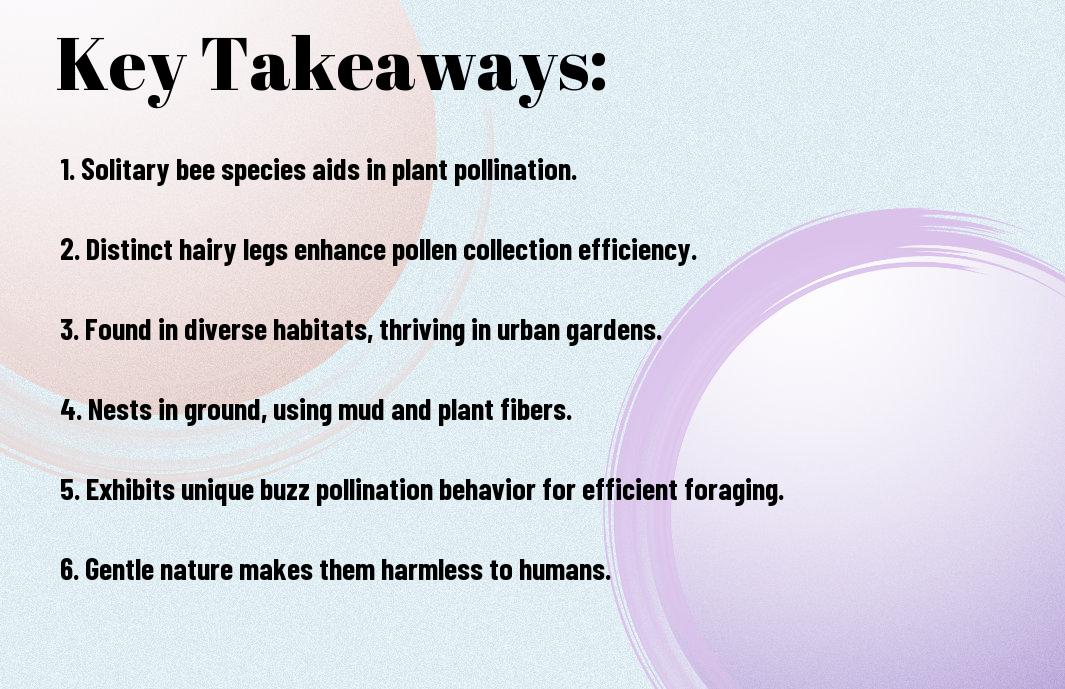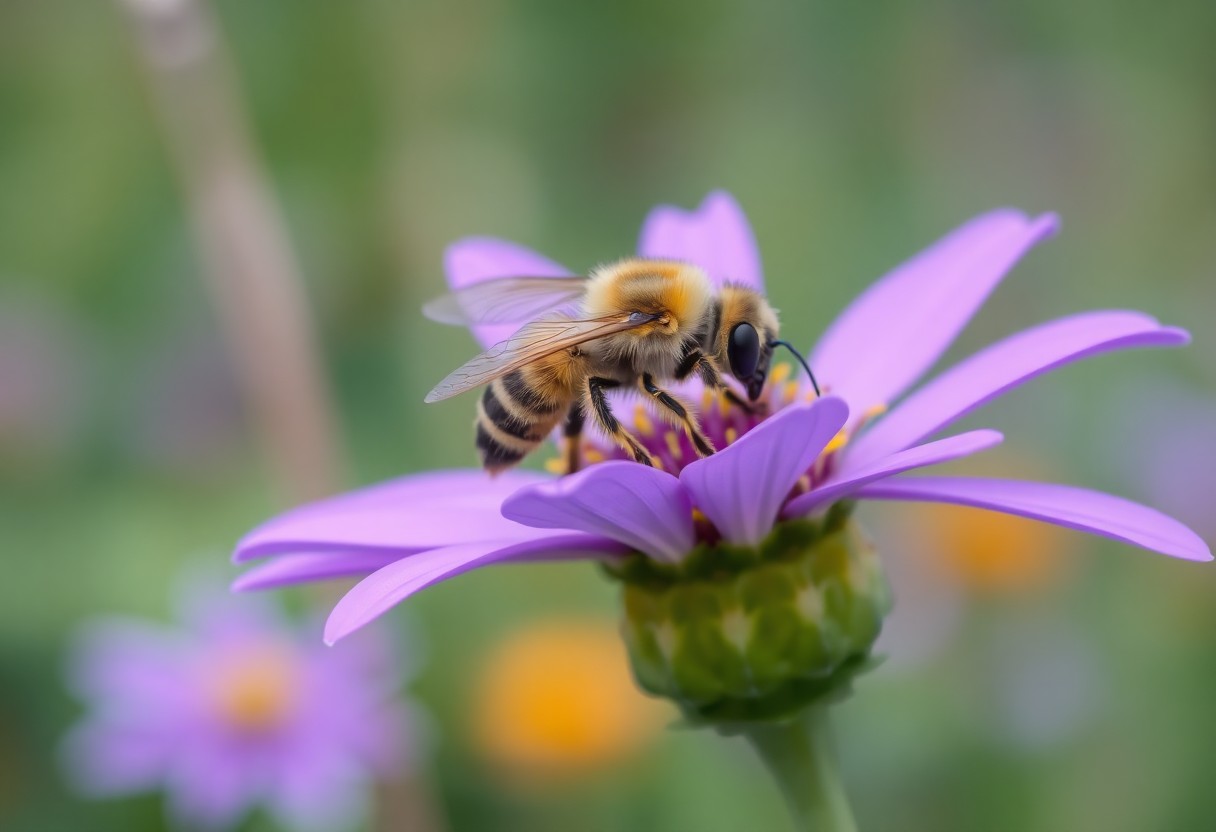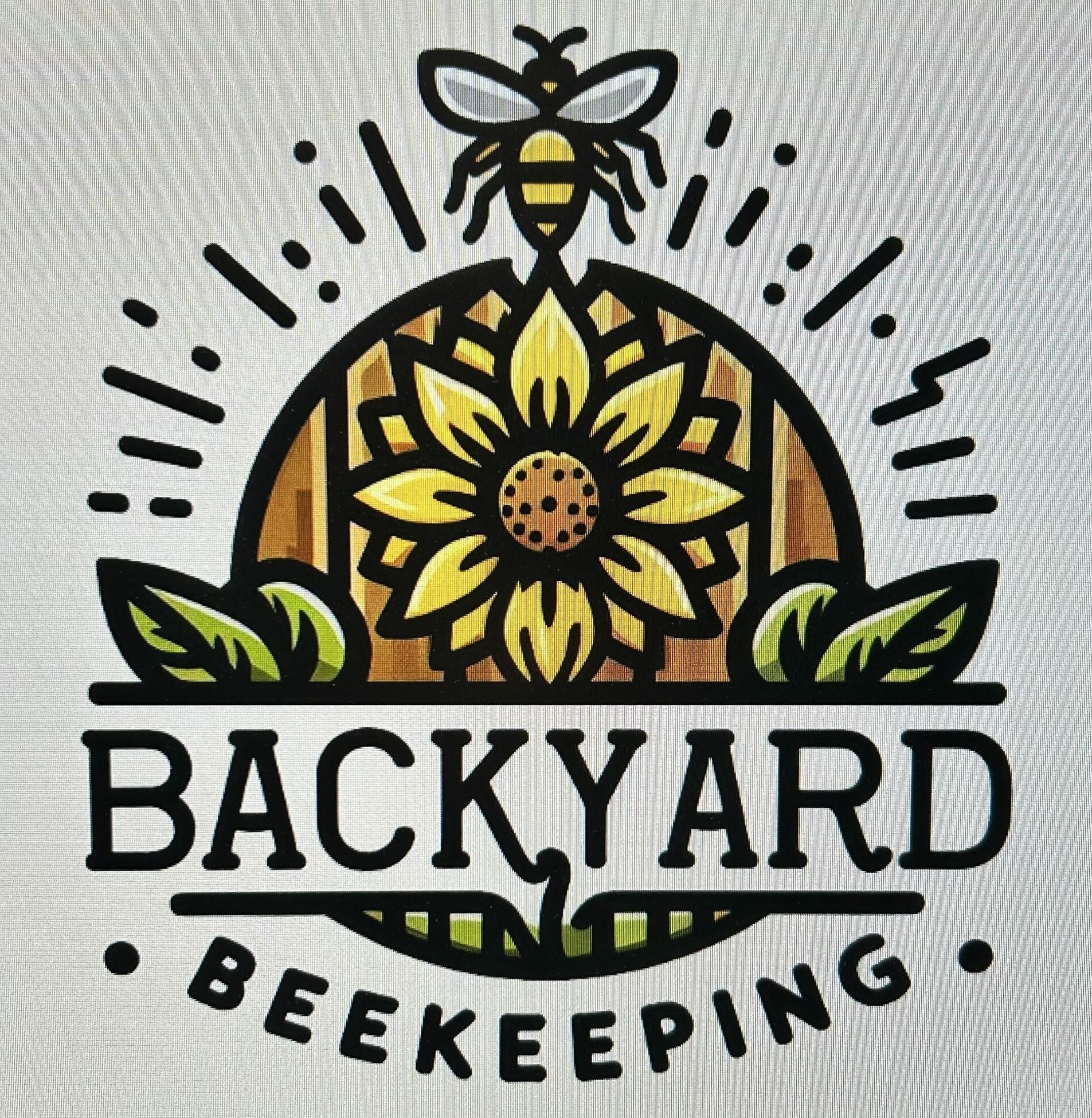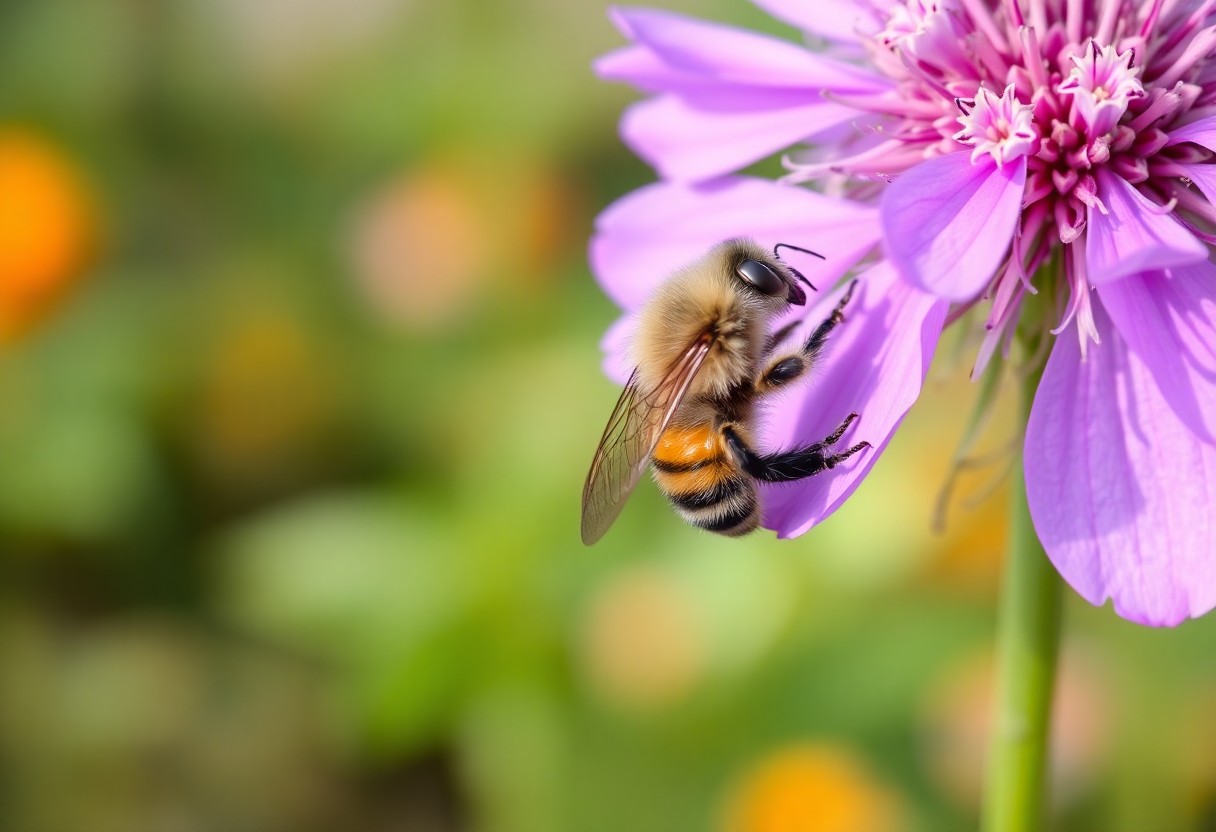Most people may not realize the importance of the Hairy Footed Flower Bee, a fascinating solitary bee species that plays a vital role in pollination. You’ll discover how these unique insects contribute to the health of ecosystems while exploring their physical traits, nesting habits, and the plants they favor. As you read on, you’ll gain insight into their intriguing lifecycle and behaviors, and understand why preserving their populations is crucial for maintaining biodiversity in your gardens and natural habitats.

Overview of Hairy Footed Flower Bee
Your exploration of the Hairy Footed Flower Bee will unveil a remarkable species of solitary bee known scientifically as Anthophora plumipes. This bee is especially important in the world of pollination, showcasing unique physical traits and behavioral patterns that contribute to its ecological role. As you examine into the characteristics of this species, you may find its lifecycle, habitat, and interactions with other species particularly fascinating.
Physical Characteristics
Flower enthusiasts often appreciate the Hairy Footed Flower Bee for its distinct appearance, marked by dense hairs on their hind legs designed for effective pollen collection. These bees typically range from 12 to 15 millimeters in length, with females generally being slightly larger than their male counterparts. Their robust body is distinguished by a shiny black exoskeleton adorned with vibrant yellow or orange hairs on the thorax, complemented by translucent, veined wings that facilitate agile flight.
Notably, the Hairy Footed Flower Bee’s unique morphology not only aids in foraging but also enables easy navigation from flower to flower. It is through these physical attributes that they effectively contribute to plant reproduction, making them vital players in ecosystems where they reside.
Habitat and Distribution
By understanding the habitat and distribution of the Hairy Footed Flower Bee, you can appreciate its adaptability to various environments. These bees are commonly found throughout Europe, including urban and rural areas in the United Kingdom. They thrive in gardens, meadows, woodlands, and urban parks, showcasing their ability to capitalize on diverse ecological niches.
Consequently, their affinity for areas abundant in flowering plants makes them vital pollinators in both natural and cultivated settings. With a preference for environments that provide nectar and pollen sources, these bees create a symbiotic relationship with their surroundings, enhancing biodiversity and promoting healthy plant growth.
Lifecycle and Behavior
Footed Flower Bees exhibit a captivating lifecycle that unfolds across several months, beginning in early spring when the females emerge from underground nests. They actively seek out flowering plants to gather nectar and pollen, which are vital for their sustenance and reproductive needs. This period is also vital for nesting, where females demonstrate remarkable resourcefulness in selecting suitable sites to lay their eggs.
Considering their nesting habits, Hairy Footed Flower Bees are known to utilize pre-existing cavities such as old beetle burrows or hollow plant stems, which allows them to conserve energy and time in building their nests. They exhibit fascinating foraging behavior that includes “buzz pollination,” a technique that enhances their efficiency in collecting pollen and ensures that the plants they visit are effectively pollinated, thereby contributing to the overall health of their ecosystem.
Importance in Pollination
Assuming you are interested in understanding the imperative role that the Hairy Footed Flower Bee plays in the ecosystem, you will find their contributions to pollination fascinating. These bees, scientifically known as Anthophora plumipes, are generalist pollinators, meaning they visit a wide variety of flowering plants. This behavior not only supports the reproductive success of individual plants but also enhances the overall biodiversity and stability of ecosystems. The Hairy Footed Flower Bee actively partakes in the pollination of wildflowers, fruit trees, and garden plants, making them invaluable allies in maintaining vibrant and thriving environments.
Role in Ecosystem
Among the many species that contribute to ecosystem vitality, Hairy Footed Flower Bees hold an important position as effective pollinators. By transferring pollen from the male parts of flowers to the female parts, they facilitate fertilization, leading to the production of seeds and fruits. This process promotes plant reproduction, allowing for the growth of both native and non-native species. Their adaptable feeding habits mean that they can pollinate a diverse range of plants, which is imperative for ensuring a balanced ecosystem filled with various flora and fauna.
Pollination Process
By visiting flowers in search of nectar, female Hairy Footed Flower Bees engage in a fascinating pollination process. As they collect resources, pollen grains stick to their hairy bodies, which they subsequently transfer to other flowers, effectively completing the pollination cycle. Unlike bees with specialized adaptations, these bees rely on their dense body hairs to carry pollen, showcasing their unique approach to this vital task. Additionally, their preference for open-faced flowers with sturdy platforms makes them particularly efficient at gathering and distributing pollen.
Further, this unique approach not only maximizes their pollen collection capabilities but also ensures that they play a critical role in enhancing the success of various plant species. By choosing specific flower shapes and sizes that facilitate easy access to nectar, Hairy Footed Flower Bees inadvertently contribute to the reproductive success of the plants they visit. This relationship emphasizes the interconnectedness of species within the ecosystem, showcasing how these bees influence plant diversity and abundance while securing their own survival through the resources they collect.
Nesting Habits
Not all bee species occupy hives or colonies; the Hairy Footed Flower Bee, for example, practices solitary nesting habits. Understanding their unique nesting behaviors can provide you with insight into their life cycle and the roles they play in your garden. Observing these habits can also enhance your appreciation for biodiversity, as these bees contribute actively to pollination and the overall health of your local ecosystem.
Nesting Materials
By gathering an array of materials, Hairy Footed Flower Bees demonstrate their resourcefulness in building their nests. One primary nesting material they use is mud, which they collect from wet soil or clay. This mud is molded into small, cylindrical tubes that serve as protective chambers for their developing larvae. Layering the mud carefully, you’ll find that their construction skills ensure a secure environment for their offspring.
Additionally, these bees incorporate other materials such as plant fibers, leaves, or petals to line their nests. This added insulation helps regulate the temperature within the nest, providing optimal conditions for larval development. Recognizing these materials may inspire you to create environments in your own garden that support the nesting habits of these beneficial bees.
Nesting Locations
On the subject of nesting locations, Hairy Footed Flower Bees are primarily ground-nesters. They favor loose, sandy soil that is easily excavated, commonly located in gardens, meadows, and other open areas. You may notice them selecting locations that are not only accessible but also rich in nearby floral resources. This proximity ensures a steady supply of nectar and pollen for both adult bees and their developing larvae.
In addition, these bees may utilize pre-existing cavities found in hollow plant stems, beetle holes, or abandoned tunnels from other insects. Such adaptability allows them to save time and energy when constructing their nests, while still providing a safe habitat for their eggs. Being aware of these nesting preferences can help you create a more welcoming environment for Hairy Footed Flower Bees, promoting their presence and benefiting your garden’s ecosystem.
Interactions with Other Species
To understand the role of the Hairy Footed Flower Bee, you must explore its interactions with other species within its ecosystem. These interactions not only impact the bee’s survival but also play a significant role in the broader ecological community. The Hairy Footed Flower Bee is primarily known for its relationships with flowering plants, which serve as vital food sources for these pollinators. By visiting a wide variety of flowers, you will notice how the bee ensures the transfer of pollen from flower to flower, thereby promoting plant reproduction and contributing to the biodiversity of the area.
Relationship with Flora
An interesting aspect of the Hairy Footed Flower Bee’s relationship with flora is its generalist foraging behavior. Because these bees have a preference for open-faced flowers with accessible nectar, you may observe them widely visiting wildflowers, garden favorites like daisies and lavender, and even fruit trees. This adaptability not only secures their food sources but also enhances the chances of effective pollination for the plants they visit, benefiting your garden or local ecosystem.
An imperative factor worth noting is that the Hairy Footed Flower Bee exhibits a unique behavior called “buzz pollination,” which is particularly beneficial for certain types of flowers. By vibrating their bodies at specific frequencies, these bees can release pollen from flowers that other pollinators might struggle to access. This specificity contributes to successful pollination, ensuring that a diverse range of plants can reproduce efficiently.
Interaction with Other Pollinators
To gain a complete picture of the Hairy Footed Flower Bee’s role in the environment, you should also consider its interactions with other pollinators. These bees often share their floral resources with various species, including bumblebees, honeybees, and solitary bee species. When these pollinators coexist in the same habitat, you will find them working in tandem to maximize pollination efficiency for flowering plants.
But the presence of multiple pollinators can lead to competition for resources. While Hairy Footed Flower Bees may encounter challenges in securing nectar and pollen in areas with high densities of other pollinators, they have adapted strategies, such as their preferred flower shapes and buzz pollination techniques, to mitigate competition. Your understanding of these interactions enriches your knowledge of the delicate balance between species, emphasizing the importance of preserving habitats that support a variety of pollinators.

Conservation Status
All across Europe, the Hairy Footed Flower Bee (Anthophora plumipes) faces several challenges that impact its population and habitat. Understanding these challenges is important for fostering a healthy environment not just for these bees, but for the ecosystems they support. By being mindful of the threats they encounter and engaging in active conservation efforts, you can play a part in safeguarding this remarkable species.
Threats to Hairy Footed Flower Bees
To effectively protect Hairy Footed Flower Bees, it’s important to recognize the various threats they face. One significant challenge is habitat loss, primarily due to urban development and agricultural practices that eliminate flowering plants important for their foraging. The decline of diverse floral resources means these bees have less access to the nectar and pollen they need to survive. Additionally, pesticide use poses a serious threat, as chemicals intended to control pests can adversely affect bee populations, leading to decreased reproductive success and higher mortality rates.
Furthermore, climate change impacts the seasonal availability of flowering plants, disrupting the synchrony between bee emergence and plant blooming times. As temperatures rise and weather patterns shift, you may notice a decline in the presence of these bees in areas where they once thrived. This highlights the importance of maintaining and creating habitats that support the needs of Hairy Footed Flower Bees during their critical foraging and nesting periods.
Conservation Efforts
To improve the conservation status of Hairy Footed Flower Bees, numerous initiatives are underway aimed at protecting their habitats and promoting sustainable gardening practices. You can contribute to these efforts by planting a variety of native flowering plants in your garden, providing a constant source of nectar and pollen throughout the seasons. Participating in local conservation programs can also help raise awareness about the importance of these bees and the ecosystems they support.
Status assessments indicate that while some populations are stable, others are declining due to the pressures mentioned above. The combined efforts of local communities, conservation organizations, and individuals like you can change the trajectory for Hairy Footed Flower Bees. By advocating for pollinator-friendly policies, reducing pesticide use, and supporting habitat restoration, you can make a significant impact on ensuring the survival of this fascinating bee species for future generations.
Benefits to Gardeners
Now, owning a garden can be incredibly rewarding, especially when you welcome the Hairy Footed Flower Bee into your green space. This fascinating solitary bee not only adds beauty to your garden environment but also plays a significant role in enhancing the overall health of your plants. With their energetic foraging behavior and pollen-collecting capabilities, these bees contribute to effective pollination, which can lead to an abundance of flowering blooms and fruitful harvests. By attracting Hairy Footed Flower Bees, you create a thriving ecosystem that supports both plant life and your gardening efforts.
Enhancing Garden Pollination
Among the distinct features of the Hairy Footed Flower Bee, its generalist pollination behavior is especially beneficial for your garden. This species visits a wide variety of flowering plants, including beloved garden favorites such as daisies and lavender. Their ability to transfer pollen between plants dramatically improves fertilization rates, resulting in more blossoms and higher yields for your flowering crops and fruits. Their unique buzz pollination technique, which enables them to access pollen from tougher flower structures, ensures that even those plants that may require special handling benefit from their visits.
Biodiversity Improvement
Between improving your garden’s productivity and creating a more vibrant ecosystem, Hairy Footed Flower Bees offer significant advantages for biodiversity. By attracting a variety of pollinators like these bees, you encourage a balanced ecosystem where different plant species can flourish. This diversity not only enhances the aesthetic appeal of your garden but also aids in creating habitats for other beneficial organisms, such as predatory insects that can help keep pests in check.
Hence, fostering an environment that supports Hairy Footed Flower Bees contributes to the resilience and stability of your garden ecosystem. Their role in pollination aids in maintaining the genetic diversity of plants, which is necessary for adapting to environmental changes. By providing food sources and nesting habitats for these bees, you are helping to ensure their presence while simultaneously promoting a rich diversity of life within your outdoor space. This ultimately leads to a healthier and more sustainable garden that benefits both you and the local wildlife.
To Wrap Up
Following this exploration of the Hairy Footed Flower Bee, you can appreciate the vital role these solitary bees play in your local ecosystem. Their unique physical characteristics and behaviors, such as buzz pollination, enhance their effectiveness as pollinators, benefiting not only wildflowers but also your garden plants. By providing valuable insights into their nesting habits and interactions with other species, you can understand the delicate relationships that sustain these remarkable creatures and the environments they thrive in.
By observing and supporting the Hairy Footed Flower Bee in your gardens and communities, you can significantly contribute to their conservation. Creating habitats with a variety of flowering plants will help ensure that these bees have ample food sources for their lifecycle. As you continue to learn about and protect these fascinating pollinators, you contribute to the overall health and diversity of your local ecosystems, helping to maintain the balance of nature that benefits everyone.

